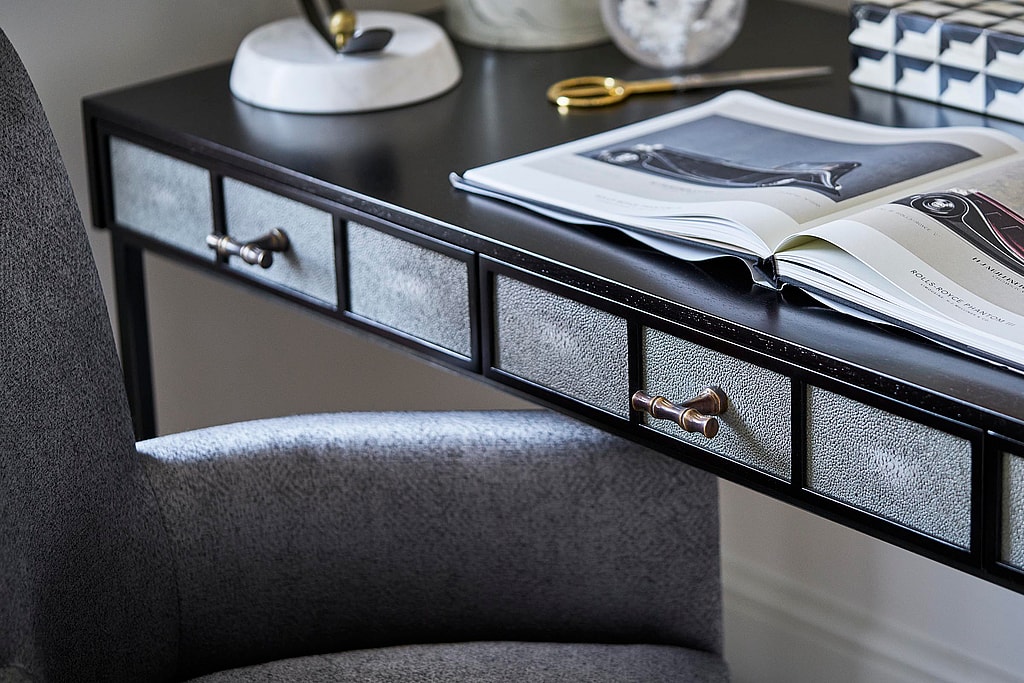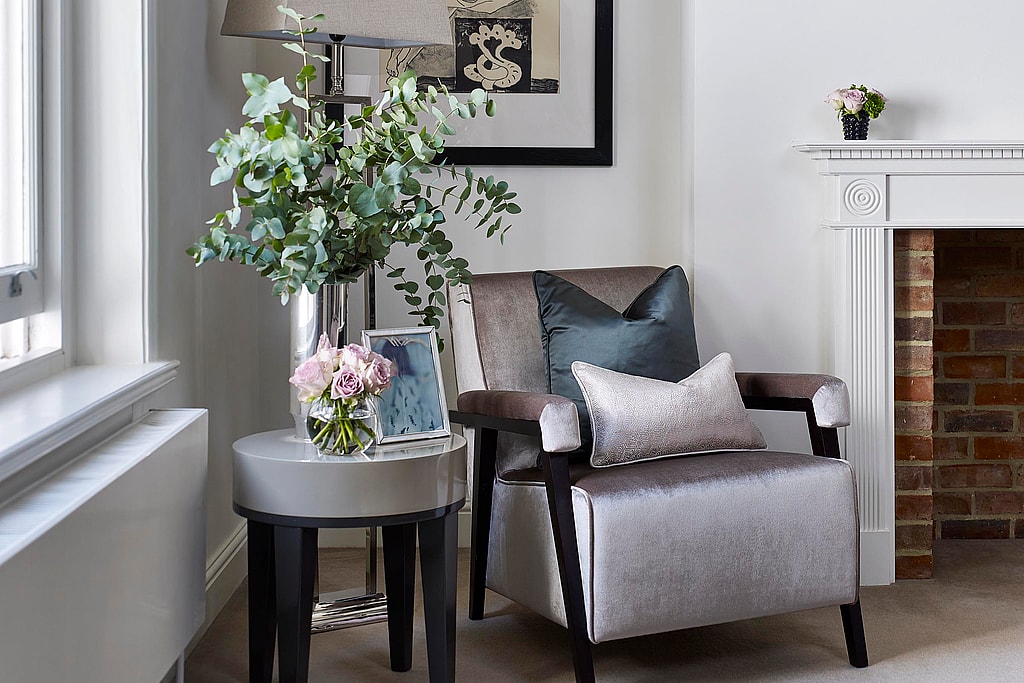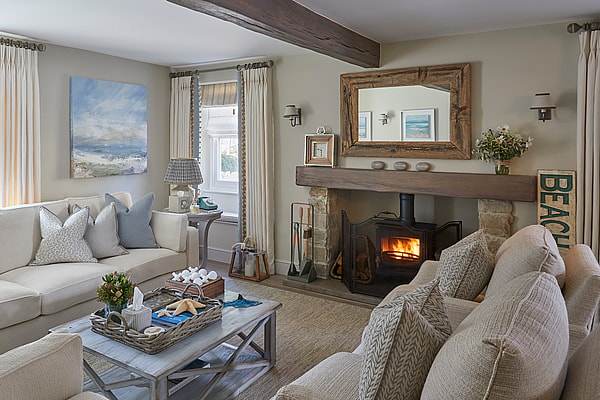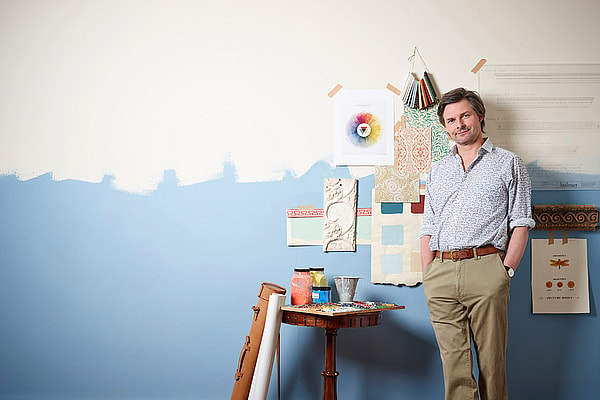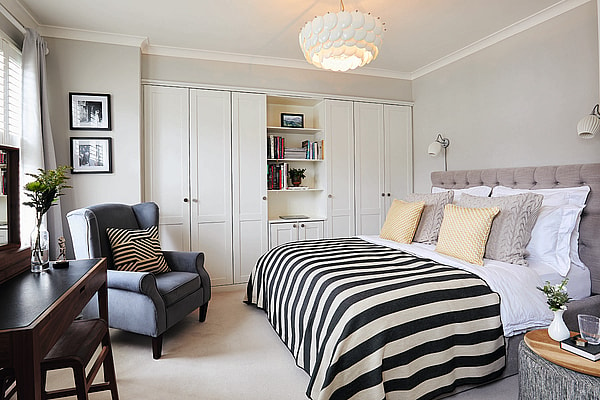DESIGNERS AT HOME: CHARU GANDHI
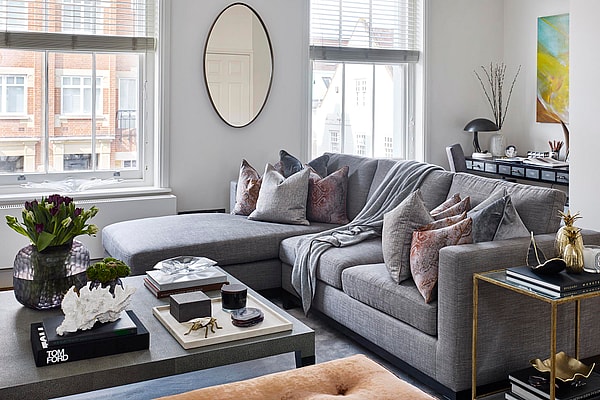
Charu Gandhi is the founder and director of design studio Elicyon, known for its highly considered luxury interiors, whose recent work includes a private club, entrance foyers and show apartments at Chelsea Barracks and a show apartment at One Casson Square on the South Bank. Gandhi has lived in her Chelsea home since 2015, chosen for its location near her studio and her parents’ home, and the interiors have carried through the same considered approach that she brings to her work. As part of the Design Centre’s Home Comforts series, she explains more about how the scheme came together.
What made you want to live where you do?
I love the location of our home – we live in my favourite part of Chelsea, south of the Kings Road, so quite close to the river and the beautiful mews streets and artists’ studios.
The apartment has a wonderful east–west aspect, which is my favourite orientation. My favourite view is from the kitchen on a cold and bright winter’s morning, seeing the sun rise in the east and the steam rising out of the ventilation bricks on the rear facades; it’s a very “London” view to my mind, but not as one would typically imagine it. I also immediately loved the high ceilings and great natural light.
What does home mean to you – is it a place for entertaining, a place for being private, a place for family life?
I see my home as the place in which I can be my authentic self – so it really caters to whichever mood I’m in. I love to entertain and spending time with my family is hugely important to me; however, I also have an introspective side and like to have quiet, private time when thinking creatively about work and our projects, so I have tried to create a home that caters for all these moods and purposes.
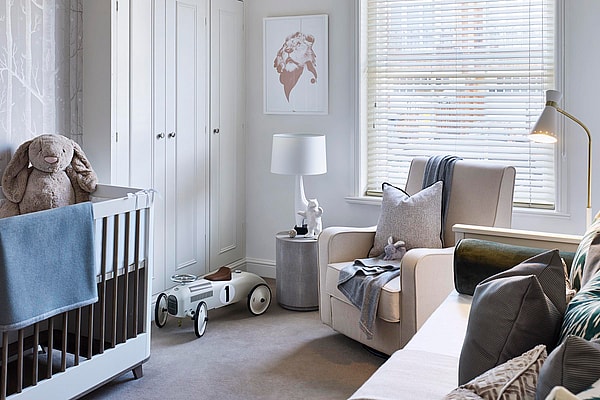 Do you have a favourite spot that you like to retreat to?
Do you have a favourite spot that you like to retreat to?
The room that we really did from scratch in terms of not bringing in anything from our previous life is my son’s bedroom/nursery. We have a beautiful whimsical wallpaper from Cole & Son, mixed with some artwork by Daniel Voss and some contemporary Japanese artists. The room is the perfect anecdote to a busy day in the studio; it is so peaceful, with desaturated colours and lovely textures.
How would you describe your personal style?
It is quite hard to define as it really evolves with time and experience and depending on what is influencing and inspiring me at a specific point in time. Overall, my style is very considered and quite highly stylised, with a focus on materiality and lots of textures. I love mixing new pieces with vintage finds and my home features a lot of artwork and pieces that I have collected – these pieces perhaps best demonstrate how my style has changed and evolved over the years.
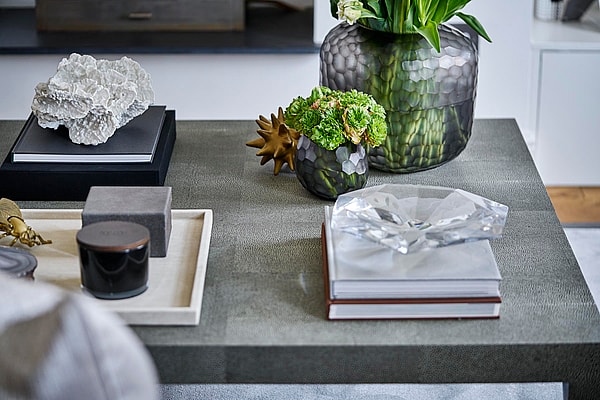 How have your created balance and harmony in your home?
How have your created balance and harmony in your home?
I think a well-balanced and harmonious home needs to be able to adapt and function for how you are living at that moment. The way in which we all use our homes has of course changed drastically over the past year and our focus on what’s important has also shifted. For me, creating a homely space for my son is the most important priority at the moment. He is still quite young and is always rushing around so our home may seem quite chaotic – in a lovely way – at knee-level height but then we’ve moved a lot of our artworks and more precious pieces to higher shelving so that there is still interest and beauty at eye level for us adults.
How have you mixed old and new in your home?
Aside from pieces I have collected myself over the years, I have a lot of objets that have been passed down from through my family – such as a vintage toy car from my grandfather – that sit alongside newer accessories or furniture.
Are there any interesting stories behind your favourite finds?
One of the key things we wanted to house was our small but meaningful art and ceramic collection, particularly some of the pieces I have from very special Indian artists.
My mother is a silversmith, so I have a lot of her pieces in the apartment – they are quite architecturally inspired and I was involved in the design of some of them so they hold a very special meaning for me. I also have quite a few prints and framed photographs by my professors from the Architectural Association, which take me back to my years as a student, and some beautiful rugs that I bought while on a trip to Iran that I absolutely love.
Are you a “decorate once” sort of person or someone who likes to change and experiment?
If I had all the time and money in the world, I would be constantly redecorating! However, in reality, I think it’s really important to get the big, architectural elements of a home such as the layout, bathrooms, kitchen, mechanics and engineering right the first time so that you don’t need to change those. I would say the same goes for floor finishes.
I do love moving furniture and accessories around and rearranging rooms, which can be very confusing for my husband! I think updating wallpaper and paint is a great way of playing with rooms and transforming a space, as is investing in new soft furnishings or lamp shades. These are small changes that you can really have fun with.
Where do you go to source at the Design Centre? Is there anything in your home that came from the showrooms that’s a particular favourite?
I adore the Cole & Son wallpaper in my son’s bedroom. It has a tree pattern and I think my son learnt to count by counting the number of trees on his wall! There are 18. I sourced a lot of our fabrics from the Design Centre; Pierre Frey, Rubelli and Romo are a few of my favourites and I have some Porta Romana lights that I love.
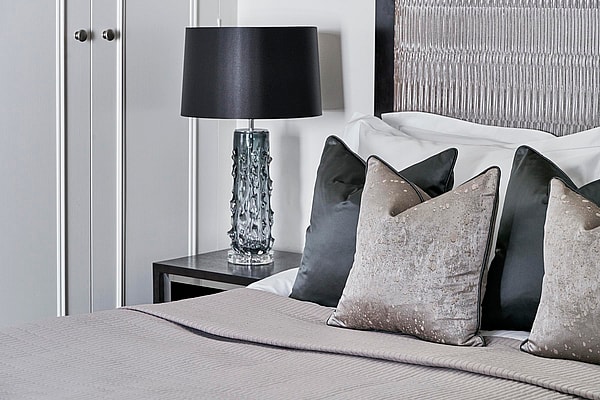
Do you think that the notion of ‘home’ has changed over the past year?
Absolutely. I would say that a home has always been more than just bricks and mortar; it has been about creating a sanctuary, a feeling of safety, something that is highly personal and almost sacred to us. However, the past year has reinforced this feeling significantly and there is now a heightened focus on domestic life – the pandemic and lockdown have also upended the way in which we use our homes. They have become everything from a school to an office, a gym to a retreat.
We are all learning that our homes can and need to be incredibly elastic and as designers, we are having to adapt our processes to create spaces that really work hard for our clients. Maximising previously hidden or unused spaces, zoning different areas through clever placement of doors, windows or screens and working with new, harder-wearing materials and textures are just some of the ways in which we have approached our design schemes across the past year to ensure that the spaces are not only beautiful, but that they function successfully.


